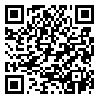Volume 9, Issue 4 And 3 (1 2004)
Back to this Issue |
Back to browse issues page
Download citation:
BibTeX | RIS | EndNote | Medlars | ProCite | Reference Manager | RefWorks
Send citation to:



BibTeX | RIS | EndNote | Medlars | ProCite | Reference Manager | RefWorks
Send citation to:
Taghizadeh Z. Toxoplasmosis and pregnancy. Journal of Hayat 2004; 9 (4 and 3) :73-80
URL: http://hayat.tums.ac.ir/article-1-286-en.html
URL: http://hayat.tums.ac.ir/article-1-286-en.html
Abstract: (8997 Views)
Pregnant women can be infected with TORCH (toxoplasmosis, other virus, rubella, cytomegalovirus and herpes) which have been linked to fetal or neonatal malformations. Toxoplasmosis is the most common of these infections. Toxoplasma is an intracellular parasite that is found in animals, including sheep and mice. It is transmitted in the feces of cats who have consumed infected mice and in meat from infected animals. The disease in humans may have no symptoms or may cause lymphadenopathy, fatigue, fever, sore throat, eye pain, and rash. It may be mistaken for influenza or mononucleosis. At least half of all pregnant women in the united states have antibodies to toxoplasma. The rate of infection in pregnancy is 1-5 in 1000 birth. When infection does occur, spontaneous abortion, chorioretinitis, anemia, liver damage, CNS abnormalities and prenatal death may result. Pregnant women should be treated for acute toxoplasmosis to prevent fetal malformations. Neonates must also be treated, even if asymptomatic. Midwives and nurses play an important role in home assessment and prenatal teaching to prevent this infection. This preventive advice has significantly reduced the incidence of toxoplasmosis in areas where it has used systematically.
| Rights and permissions | |
 |
This work is licensed under a Creative Commons Attribution-NonCommercial 4.0 International License. |





